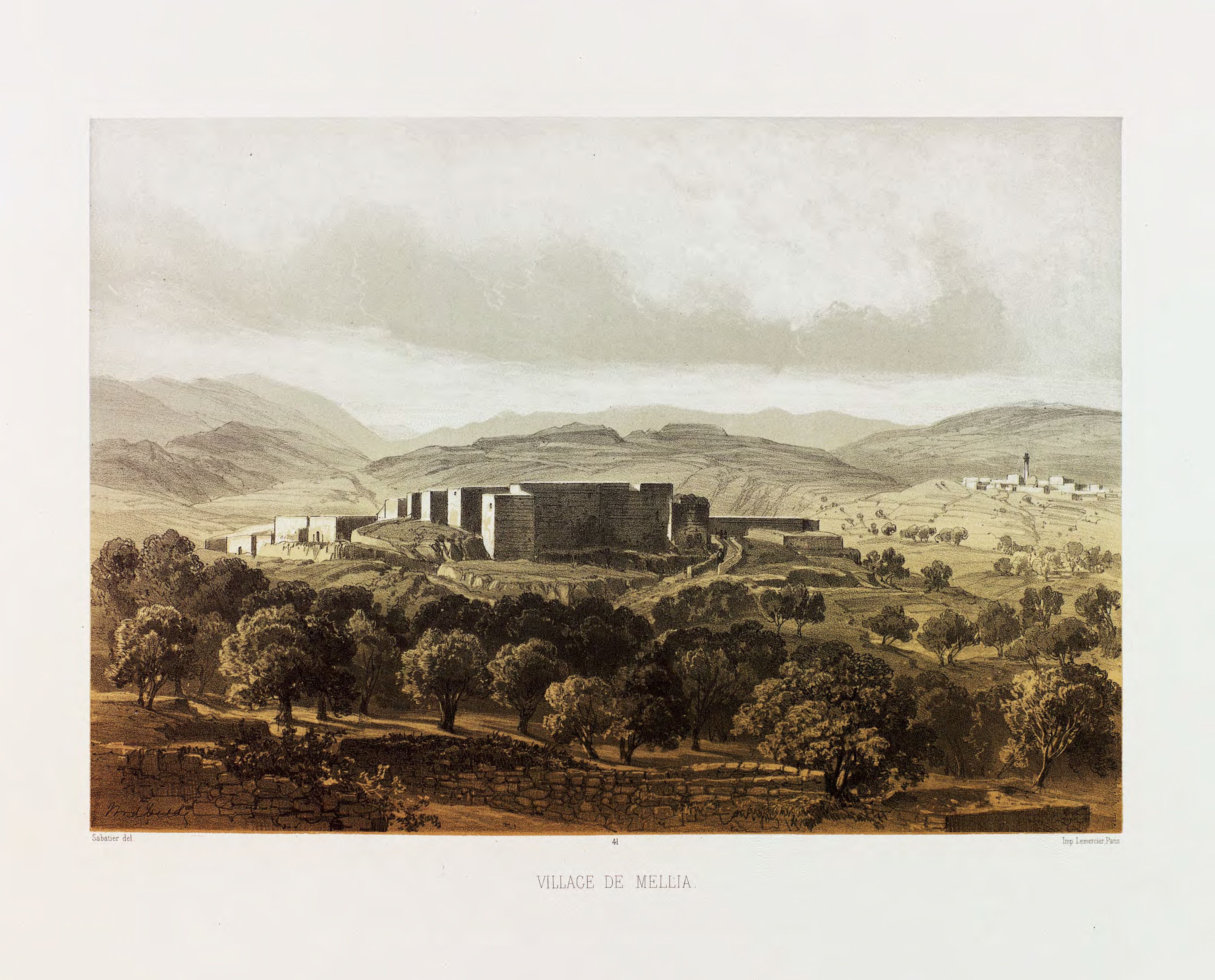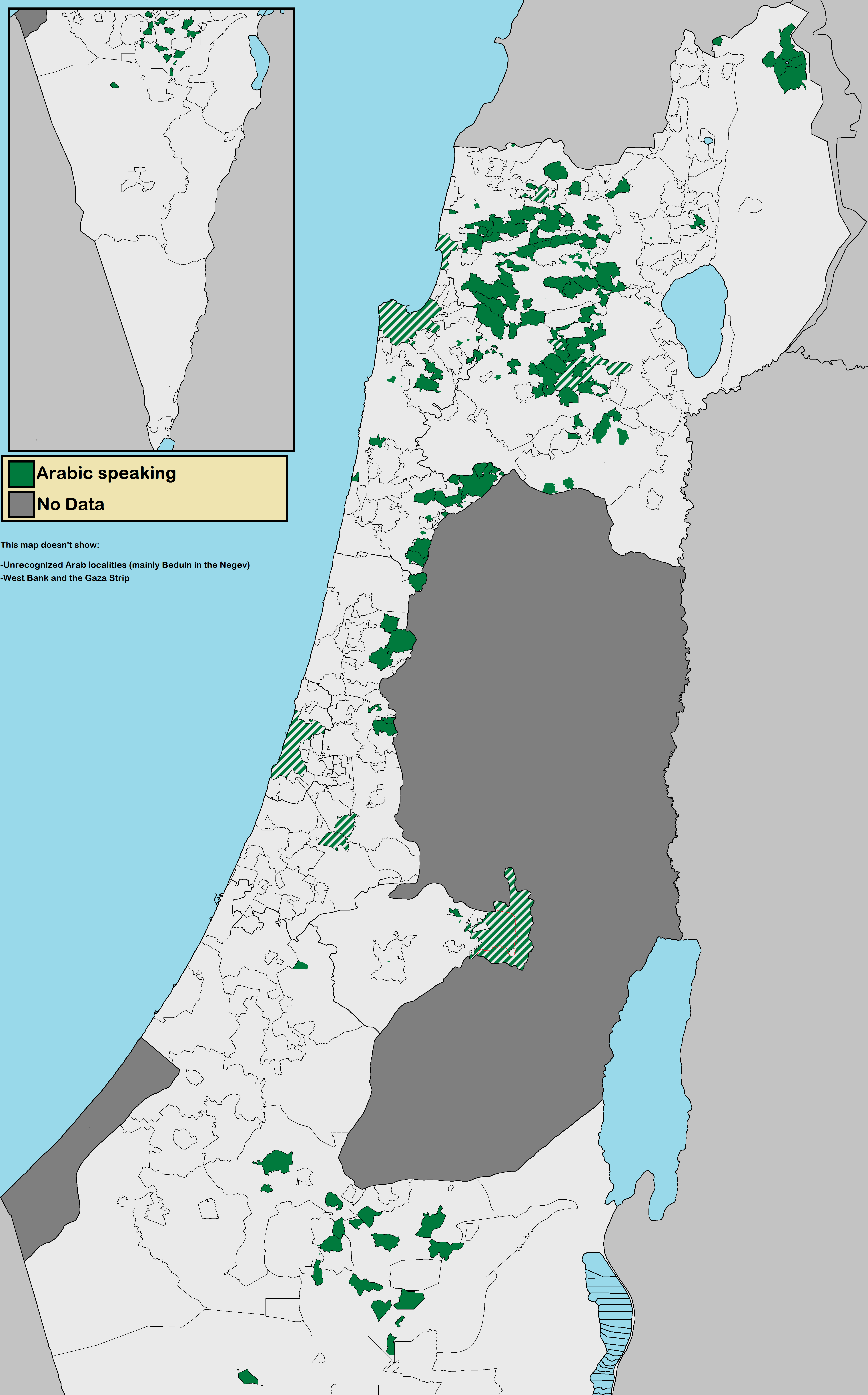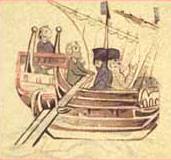|
Mi'ilya
Mi'ilya ( ar, معليا, he, מִעִלְיָא) is an Arab local council in the western Galilee in the Northern District of Israel. Its name during the Kingdom of Jerusalem era in Galilee was Castellum Regis. In it had a population of , all of whom are Melkite Greek Catholics. The town is located immediately to the northwest of Ma'alot-Tarshiha. History Archaeological excavations in Mi'ilya gives indication of inhabitation from the Late Bronze Age and Iron Age, as well as Hellenistic, Roman, Byzantine, Crusader, Mamluk and Ottoman periods. Crusader period In the Crusader period, Mi'ilya was first mentioned in 1160, when it and several surrounding villages was transferred to a Crusader named ''Iohanni de Caypha'' (Johannes of Haifa). In 1179 Viscountess Petronella of Acre sold the houses, vineyards and gardens of Mi'ilya to Count Jocelyn III, uncle of Baldwin IV,Strehlke, 1869, pp1112, No. 11; cited in Röhricht, 1893, RRH, p156 No. 587; cited in Pringle, 1997, p 71/ref> ... [...More Info...] [...Related Items...] OR: [Wikipedia] [Google] [Baidu] |
Jocelyn III
Joscelin III of Edessa (1139 – after 1190) was the titular Count of Edessa, who during his lifetime managed to amass enough land to establish the '' Seigneurie of Joscelin.'' Early life He was the son of Joscelin II and his wife Beatrice of Saone. He inherited the title of Count of Edessa from his father, Joscelin II, although Edessa had been captured in 1144 and its remnants (including the Lordship of Turbessel) conquered or sold years before he took the title. Joscelin lived in the Kingdom of Jerusalem and managed to gather enough land around Acre to set up the '' Seigneurie of Joscelin.'' Royal Guardian His sister, Agnes of Courtenay, had been the first wife of King Amalric I before he succeeded to the throne, and was the mother of Baldwin IV and Sibylla. In 1164 Joscelin was taken captive by Nur ad-Din Zengi at the Battle of Harim. He remained a prisoner until 1176 when Agnes paid his ransom of 50,000 dinars, probably with support from the royal treasury. His nephe ... [...More Info...] [...Related Items...] OR: [Wikipedia] [Google] [Baidu] |
Arab Localities In Israel
Arab localities in Israel include all population centers with a 50% or higher Arab population in Israel. East Jerusalem and Golan Heights are not internationally recognized parts of Israel proper but have been included in this list. According to the Israeli Central Bureau of Statistics census in 2010, "the Arab population lives in 134 towns and villages. About 44 percent of them live in towns (compared to 81 percent of the Jewish population); 48 percent live in villages with local councils (compared to 9 percent of the Jewish population). Four percent of the Arab citizens live in small villages with regional councils, while the rest live in unrecognized villages (the proportion is much higher, 31 percent in the Negev)". The Arab population in Israel is located in five main areas: Galilee (54.6% of total Israeli Arabs), Triangle (23.5% of total Israeli Arabs), Golan Heights, East Jerusalem, and Northern Negev (13.5% of total Israeli Arabs). Around 8.4% of Israeli Arabs live in off ... [...More Info...] [...Related Items...] OR: [Wikipedia] [Google] [Baidu] |
Ma'alot-Tarshiha
Ma'alot-Tarshiha ( he, מַעֲלוֹת-תַּרְשִׁיחָא; ar, معالوت ترشيحا, ''Maʻālūt Taršīḥā'') is a city in the North District in Israel, some east of Nahariya, about above sea level. The city was established in 1963 through a municipal merger of the Arab town of Tarshiha and the Jewish town of Ma'alot, creating a unique type of Israeli mixed city. In , the city had a population of . History Tarshiha Excavations of a 4th-century burial cave in the village unearthed a cross and a piece of glass engraved with a menorah. Crusader sources from the 12th and 13th century refer to Tarshiha as ''Terschia,'' ''Torsia'', and ''Tersigha.''Petersen, 2001, p293/ref> The King had initiated the settlement of Crusader (''Latin'', ''Frankish'') people in nearby Mi'ilya ("Castellum Regis"), and from there settlement spread out to Tarshiha. In 1160, ''Torsia'' and several surrounding villages were transferred to a Crusader named ''Iohanni de Caypha'' (Johannes of ... [...More Info...] [...Related Items...] OR: [Wikipedia] [Google] [Baidu] |
Beatrix De Courtenay
Beatrix de Courtenay (died after 1245) was a Titular Countess of Edessa and Countess consort of Henneberg as the wife of Otto von Botenlauben. She was the eldest daughter of Agnes of Milly ( de) and Joscelin III, Count of Edessa, who sold Chastel Neuf and Toron to the Teutonic order. She was named after Joscelin’s mother. Beatrix married firstly William of Valence. By 1208 Beatrix married Otto whom she bore sons Otto and Henry. In 1220 Beatrix de Courtenay and her husband sold their land in Galilee, including "one third of the fief of St. George", and "one third of the village of ''Bokehel''", to the Teutonic Knights The Order of Brothers of the German House of Saint Mary in Jerusalem, commonly known as the Teutonic Order, is a Catholic religious institution founded as a military society in Acre, Kingdom of Jerusalem. It was formed to aid Christians o ....Strehlke, 1869, pp43 44, No. 53; cited in Röhricht, 1893, RHH, p248 No. 934 (38); cited in Frankel, 1988, ... [...More Info...] [...Related Items...] OR: [Wikipedia] [Google] [Baidu] |
Northern District (Israel)
The Northern District ( he, מחוז הצפון, ''Mekhoz HaTzafon''; ar, منطقة الشمال, ''Minṭaqat ash-Shamāl'') is one of Israel's six administrative districts. The Northern District has a land area of 4,478 km2, which increases to 4,638 km2 when both land and water are included. The district capital is Nof HaGalil and the largest city is Nazareth. The Golan Heights has been run as a sub-district of the North District of Israel since the 1981 Golan Heights Law was passed, although the claim is only recognized by the United States while United Nations Security Council Resolution 497 condemns the annexation but does not enforce it. The Golan Heights covers a land area of 1,154 km2 and the remainder of the Northern District covers 3,324 km2 (3,484 km2 including water). Demographics According to the Israeli Central Bureau of Statistics data for 2016: * Total population: 1,390,900 (2016) * Ethnic: ** Arabs: 746,600 (53.7%) ** Jews: 599,700 (43 ... [...More Info...] [...Related Items...] OR: [Wikipedia] [Google] [Baidu] |
Teutonic Knights
The Order of Brothers of the German House of Saint Mary in Jerusalem, commonly known as the Teutonic Order, is a Catholic religious institution founded as a military society in Acre, Kingdom of Jerusalem. It was formed to aid Christians on their pilgrimages to the Holy Land and to establish hospitals. Its members have commonly been known as the Teutonic Knights, having a small voluntary and mercenary military membership, serving as a crusading military order for the protection of Christians in the Holy Land and the Baltics during the Middle Ages. Purely religious since 1810, the Teutonic Order still confers limited honorary knighthoods. The Bailiwick of Utrecht of the Teutonic Order, a Protestant chivalric order, is descended from the same medieval military order and also continues to award knighthoods and perform charitable work. Name The name of the Order of Brothers of the German House of Saint Mary in Jerusalem is in german: Orden der Brüder vom Deutschen Haus der He ... [...More Info...] [...Related Items...] OR: [Wikipedia] [Google] [Baidu] |
House Of Henneberg
The House of Henneberg was a medieval German comital family (''Grafen'') which from the 11th century onwards held large territories in the Duchy of Franconia. Their county was raised to a princely county (''Gefürstete Grafschaft'') in 1310. Upon the extinction of the line in the late 16th century, most of the territory was inherited by the Saxon House of Wettin and subsequently incorporated into the Thuringian estates of its Ernestine branch. Origins The distant origins of this family are speculative yet seem to originate in the Middle Rhine Valley, east of modern-day France. Charibert, a nobleman in Neustria is the earliest recorded ancestor of the family, dating before 636. Five generations pass between Charibert and the next descendant of note, Robert III of Worms. Both the Capetian dynasty and the Elder House of Babenberg (Popponids) are direct male lineal descendants of Count Robert I and therefore referred to as Robertians. The designation ''Babenberger'', from the castl ... [...More Info...] [...Related Items...] OR: [Wikipedia] [Google] [Baidu] |
Otto Von Botenlauben
Otto von Botenlauben or Botenlouben (1177, Henneberg – before 1245, near Bad Kissingen), the Count of Henneberg from 1206, was a German minnesinger, Crusader and monastic founder. Otto von Botenlauben was the fourth son of Count Poppo VI von Henneberg and his wife Sophia, countess of Andechs and margravine of Istria. In the oldest records (from 1196 and 1197), he still called himself Count von Henneberg. In 1206, he pronounced himself Count von Botenlauben, after Botenlauben Castle near Bad Kissingen, the ruins of which remain to this day. Otto’s existence is first recorded at the court of Emperor Henry VI in 1197, when he took part in the Emperors' campaign to Italy. After that, Otto travelled to the Holy Land and made a career in the kingdom of Jerusalem, where he gained good standing, prosperity and married Beatrix de Courtenay, the daughter of the royal seneschal Joscelin III, Count of Edessa, in 1205. In 1220, he sold his hereditary lands (iure uxoris), the ''seign ... [...More Info...] [...Related Items...] OR: [Wikipedia] [Google] [Baidu] |
Saladin
Yusuf ibn Ayyub ibn Shadi () ( – 4 March 1193), commonly known by the epithet Saladin,, ; ku, سهلاحهدین, ; was the founder of the Ayyubid dynasty. Hailing from an ethnic Kurdish family, he was the first of both Egypt and Syria. An important figure of the Third Crusade, he spearheaded the Muslim military effort against the Crusader states in the Levant. At the height of his power, Ayyubid territorial control spanned Egypt, Syria, Upper Mesopotamia, the Hejaz, Yemen, the Maghreb, and Nubia. Alongside his uncle Shirkuh, a military general of the Zengid dynasty, Saladin was sent to Egypt under the Fatimid Caliphate in 1164, on the orders of Nur ad-Din. With their original purpose being to help restore Shawar as the to the teenage Fatimid caliph al-Adid, a power struggle ensued between Shirkuh and Shawar after the latter was reinstated. Saladin, meanwhile, climbed the ranks of the Fatimid government by virtue of his military successes against Crusader assault ... [...More Info...] [...Related Items...] OR: [Wikipedia] [Google] [Baidu] |
Pisa
Pisa ( , or ) is a city and ''comune'' in Tuscany, central Italy, straddling the Arno just before it empties into the Ligurian Sea. It is the capital city of the Province of Pisa. Although Pisa is known worldwide for its leaning tower, the city contains more than twenty other historic churches, several medieval palaces, and bridges across the Arno. Much of the city's architecture was financed from its history as one of the Italian maritime republics. The city is also home to the University of Pisa, which has a history going back to the 12th century, the Scuola Normale Superiore di Pisa, founded by Napoleon in 1810, and its offshoot, the Sant'Anna School of Advanced Studies.Scuola Superiore Sant'Anna di Pisa Information statistics History ...
|
Conrad Of Montferrat
Conrad of Montferrat (Italian: ''Corrado del Monferrato''; Piedmontese: ''Conrà ëd Monfrà'') (died 28 April 1192) was a nobleman, one of the major participants in the Third Crusade. He was the ''de facto'' King of Jerusalem (as Conrad I) by virtue of his marriage to Isabella I of Jerusalem from 24 November 1190, but officially elected only in 1192, days before his death. He was also the eighth Marquess of Montferrat from 1191. Early life Conrad was the second son of Marquess William V of Montferrat, "the Elder", and his wife Judith of Babenberg. He was a first cousin of Frederick Barbarossa, Holy Roman Emperor, as well as Louis VII of France and Leopold V of Austria. Conrad was born in Montferrat, which is now a region of Piedmont, in northwest Italy. The exact place and year are unknown. He is first mentioned in a charter in 1160, when serving at the court of his maternal uncle, Conrad, Bishop of Passau, later Archbishop of Salzburg. (He may have been named after him, or af ... [...More Info...] [...Related Items...] OR: [Wikipedia] [Google] [Baidu] |
Vassals Of The Kingdom Of Jerusalem
The Crusader state of the Kingdom of Jerusalem, created in 1099, was divided into a number of smaller seigneuries. According to the 13th-century jurist John of Ibelin, the four highest crown vassals (referred to as barons) in the kingdom proper were the count of Jaffa and Ascalon, the prince of Galilee, the lord of Sidon, and the lord of Oultrejordain. There were also a number of independent seigneuries, and some land held under direct royal control, such as Jerusalem itself, Acre and Tyre. Northern states Aside from the Kingdom of Jerusalem, there were also three other major Crusader states in the Near East: *County of Edessa *County of Tripoli *Principality of Antioch These states nominally bore some dependency on the kingdom of Jerusalem. The king of Jerusalem was bound to reconcile them in case of disputes, or between a vassal prince and the Latin patriarch of Antioch, and could claim the regency in case of a vacancy or minority in their successions. Edessa was perh ... [...More Info...] [...Related Items...] OR: [Wikipedia] [Google] [Baidu] |








